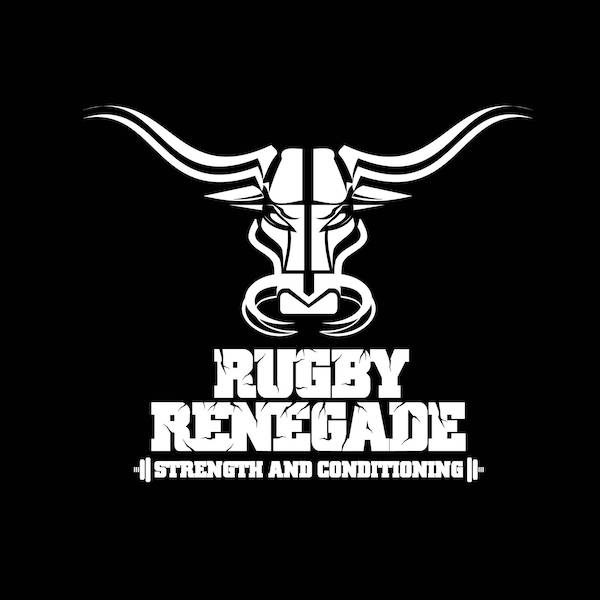Two weeks ago Rugby Renegade visited West Bromich Albion’s Speed Masterclass featuring JB Morin and Jonas Dodoo. Last week we covered JB’s presentation (click here to read it) and this week we will have a look at the highlights of Jonas’ presentation.
Jonas works with some of the top sprinters in the UK and consults with various players in rugby and football. He has coached under the legendary Dan Pfaff among other elite sprint coaches…
Projection – Switching – Reactivity
In team sports athletes shouldn’t worry about acceleration, transition and top speed. You should think of the above and it will take care of the rest. Projection makes you think of driving forwards and increasing stride length. Switching is transferring into a more upright posture and Reactivity helps you focus on minimising ground contact times and using your legs likes springs to propel you forwards.
Stride Rate Should be Maximal From Beginning
Thats right. you shouldn’t think about increasing frequency over time. Approach acceleration as stride length increasing every step. Much like JB Morin discussed, conversely ground contact time should decrease with each step. Focus on this and speed will improve.
Does This Work for Change of Direction
Can you apply the same to change of direction? Jonas says yes! Deceleration is just projection in the opposite direction! He suggests you need to learn fundamental acceleration mechanics in isolation and only then apply them to sport specific situations and reactivity to stimuli.
Team Sport Players Comparable to Elite Women’s sprinters!
Careful how you use this information! This is just a funny aside that when looking at speed and power scores of team sports athletes there is no point comparing to elite male sprinters. The females on the other hand are better for team sports athletes to aim for. This, unsurprisingly isn’t very popular with some of Jonas’ rugby players!
Training for Force Dominant or Velocity Dominant
Jonas gave caution regarding JB Morin’s research and highlighted the need to train the athletes force-velocity weakness but not to neglect their strengths too. I liken this to Charlie Francis’ Vertical Integration approach, where all needs are trained concurrently but the emphasis is changed dependant on the athlete.
Philosophy
Jonas also showed his conceptual solution for velocity dominant and force dominant training approach. It highlighted the basic outcomes of his training and then the more specific training methodologies. Everything had a reason and was easily explainable to an athlete for them to understand the “why” of the training approaches. This highlighted the importance of coaches having a sound evidence based philosophy that is simple and easy to explain to athletes and coaches. When questioned on any of it Jonas showed real confidence in his approach and that should be the desired outcome from your philosophy.
Resisted Accelerations can Highlight an Athletes Weaknesses
 Yet another reason to use sleds and prowlers! Jonas says that some athletes will have good technique during sprint training but when you add resistance you can see fundamental flaws in technique that you may not have seen otherwise. Such flaws may only become apparent in times of fatigue in competition which you won’t want to simulate in training often. Make sure your athletes practice good technique always.
Yet another reason to use sleds and prowlers! Jonas says that some athletes will have good technique during sprint training but when you add resistance you can see fundamental flaws in technique that you may not have seen otherwise. Such flaws may only become apparent in times of fatigue in competition which you won’t want to simulate in training often. Make sure your athletes practice good technique always.
Simple Coaching Cues
Jonas was discussing the importance of pre-tension before foot contact with the ground and was questioned about the importance of coaching that to younger athletes in the academy setting. The question suggested that this would be too confusing for young athletes but Jonas believes that most of the kids will be doing it by instinct and if you use simple cues like “be bouncy” it will take care of itself. Just because the reality of a skill is complex doesn’t mean that the cue should be.
Push Pull Hinge Brace & Rotate
When it comes to gym work Jonas keep things simple. He focuses on the lower push (squat), pulls (deadlift, olympic), upper push/pulls, braced core work and rotational strength work. Renegades should be no stranger to the thinking that improving your strength and power on the basic lifts will lay the foundation for speed and performance gains. But, its nice to hear a top sprint coach echoing that philosophy.
Conclusion
 Jonas was an excellent speaker who clearly is consumed by his coaching and training philosophy. He knows it inside out and has worked to make it simple and effective to be delivered to his athletes. We would love to take part in one of his practicals and would recommend them to anyone else.
Jonas was an excellent speaker who clearly is consumed by his coaching and training philosophy. He knows it inside out and has worked to make it simple and effective to be delivered to his athletes. We would love to take part in one of his practicals and would recommend them to anyone else.
To learn more about Jonas checkout his website here: Speedworks.training




